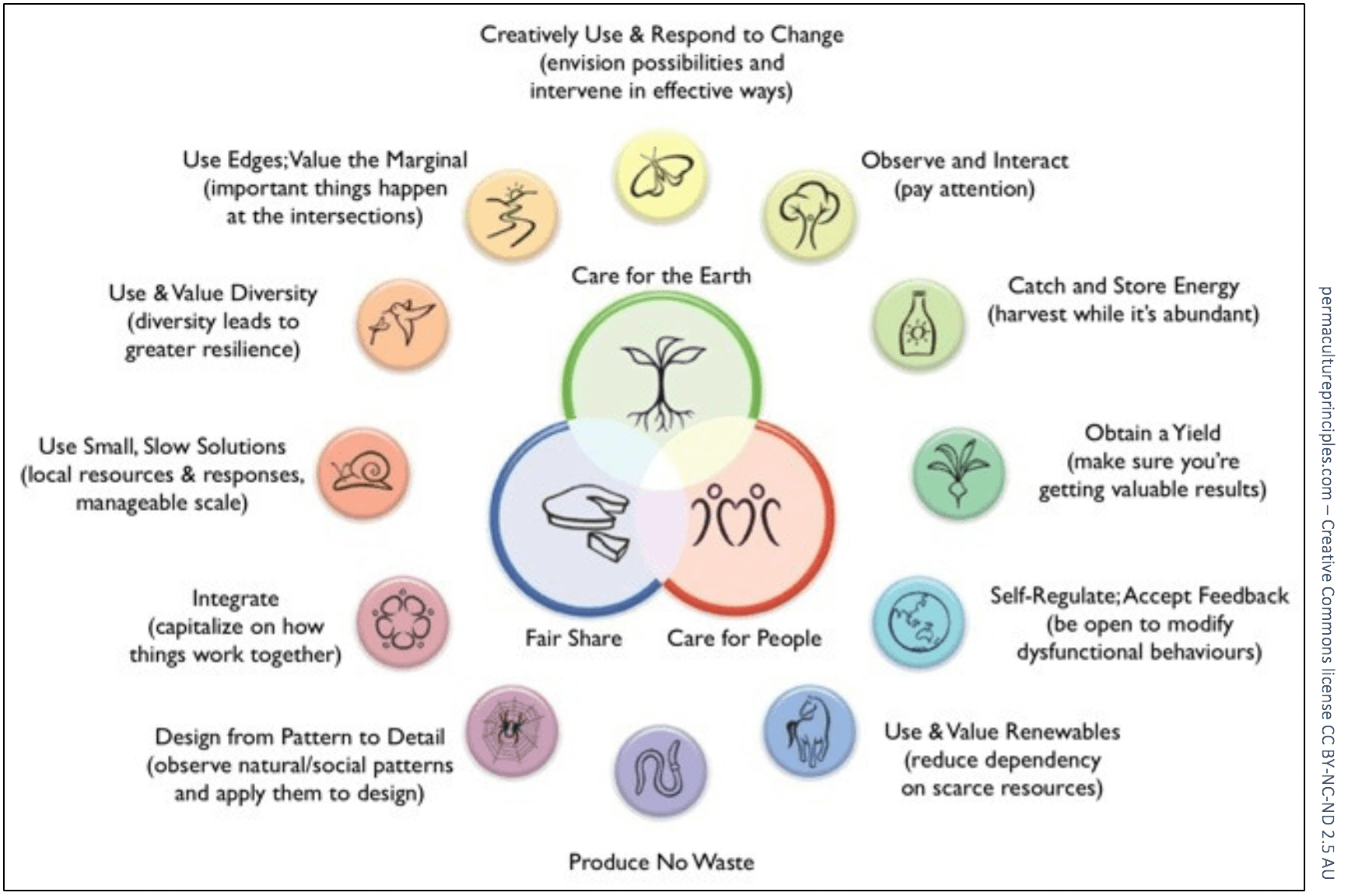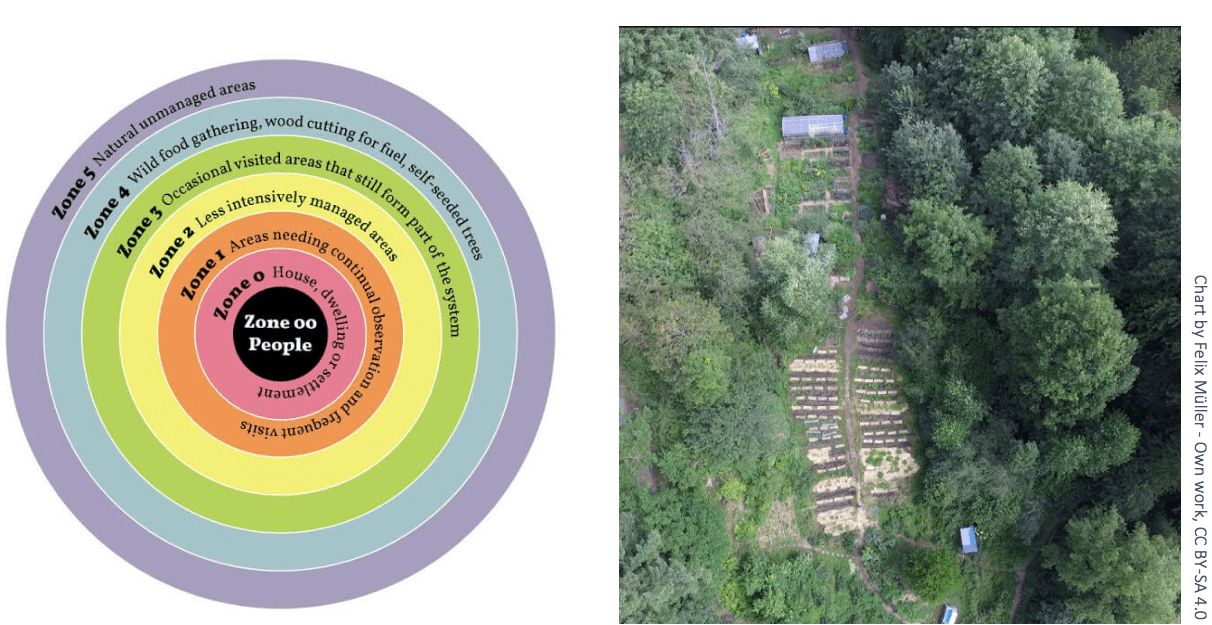Permaculture
What is Permaculture?

The term itself was crafted from the words “permanent” and “agriculture,” indicating the ability to grow food in a sustainable way over the long term. Permaculture is both a paradigm and set of design tools, and is based on three ethical principles: people care, earth care, and fair share (justice). Permaculture seeks to find ways of maximizing output, like food, while minimizing inputs like labor or the chemicals found in industrial farming. This benefits ecosystems, the people living on the land, and society at large. It also teaches us about community, resilience, diversity, and the “invisible structures” around us.

Permaculture techniques include:
- Perennial systems: when we rely on annuals (species that only live one season), we have to break up the soil and replant them every year. They need weeding and usually require irrigation – and then they’re removed and the ground is tilled again. Over time, this annual cycle compacts and damages the soil. It’s labor intensive and large farms growing annual crops typically rely on heavy inputs of machinery and chemicals. But when we plant combinations of perennials (species that live for many years), like nut trees and berry bushes, we can break free of annual-dependent cycles and generate food with fewer inputs. We bank carbon and create habitat at the same time. The Outback Forest Garden is an example of a perennial system.
- Working the edge: in an ecological sense, an “edge” is where two different habitats intersect, like where a meadow turns into forest, or where water meets land in an estuary or wetland. These areas are often hot spots for biodiversity, energy storage, and ecosystem services. Permaculture systems look for ways to increase and work the edges to maximize food production and ecosystem health.
- Stacking functions: permaculture looks for multiple uses in every item on the farm. An example is an apple tree – not only does it produce apples to eat, but it generates shade, wood for construction, habitat for songbirds, and can be a physical support for growing vines. We stack functions in the Outback through “guild planting,” where each species benefits the others in the group, and each fills a different role in the plant community.
Permaculture at the Outback
The Outback is a beautiful place to fully engage with permaculture against the backdrop of a long history of learning and experimentation built into the farm. We provide opportunities for all the hands-on basics, from composting to planting to seed saving to path design. We offer students the chance to experience a truly community-based food and farming system and the power (and challenges) of shared governance. We are engaged in addressing food insecurity and issues of justice on campus and beyond, including the permaculture ethics in all we do.
Permaculture Zones in the Outback

Permaculture design includes the thoughtful construction of zones, or areas of activity. The smaller the number, the higher the priority and activity that takes place. For example, Zone 1 is the house or center of the land where the most time is spent and where we should locate parts of the farm that need easy access and attention several times a day. At the Outback, this is our Outdoor Classroom and Toolshed areas. Zone 2 is where daily activities are located, like chickens, veggie gardens, and compost bins. Zone 3 is a good location for low-maintenance crops and pasture for livestock. Zone 5 is native habitat or wild areas – not a feature on most farms! But having nature as an integrated part of the Outback means we have habitat for pollinators, beneficial insects, and owls to hunt rodents. Having nature as a neighbor means we retain both natural cycles and an endless resource for learning.